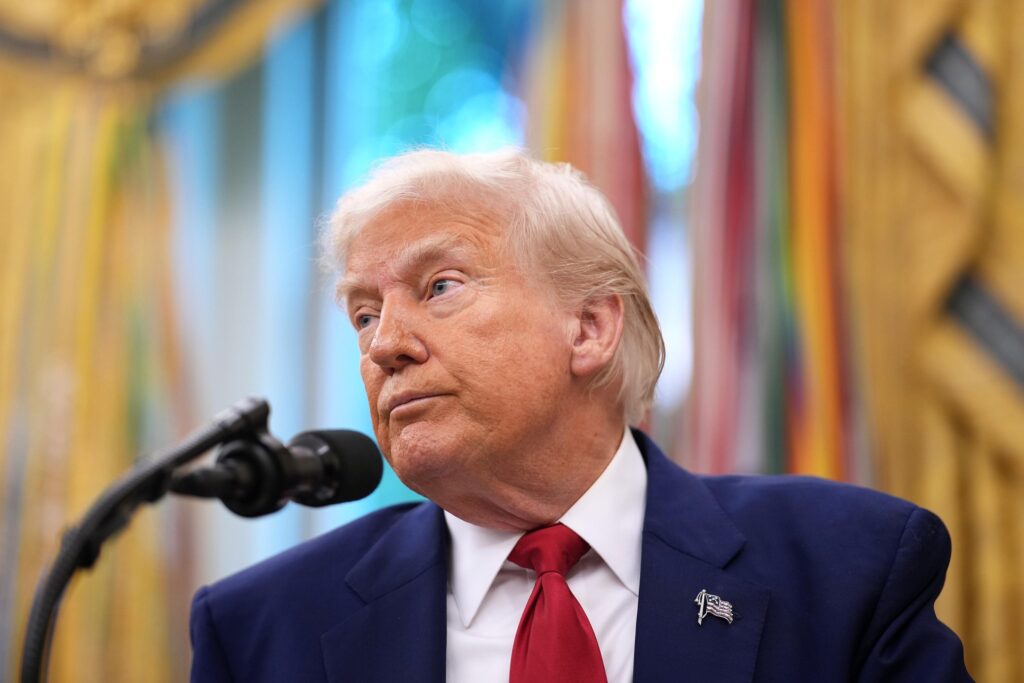The Global Economic Impact of Tariffs: A New Perspective
In a compelling evaluation of the current state of the global economy, analysts caution that tariffs enacted during Donald Trump’s presidency are likely to cause substantial harm to economies worldwide. A recent report from The New York Times highlights how these trade restrictions, initially intended to safeguard American industries, are now emerging as a trigger for widespread economic deceleration. As countries grapple with the intricacies of international trade amid escalating inflation and disruptions in supply chains, the long-term ramifications of Trump’s tariff strategies could extend well beyond U.S. borders, influencing employment rates, pricing structures, and overall economic stability globally. This article examines the expected effects of these tariffs while analyzing how global markets are adjusting in response.
Effects on International Trade Relations and Supply Chains
The introduction of tariffs during Trump’s administration has dramatically transformed international trade relations. In retaliation against U.S. tariffs, various nations have heightened tensions that complicate both diplomatic relations and commercial activities on a global scale. The fallout from these actions is evident in several key areas:
- Rising Expenses: Companies are encountering increased costs for imported products which they may ultimately pass onto consumers.
- Supply Chain Challenges: Businesses are reassessing their supply chains which could result in delays and decreased operational efficiency.
- Market Instability: Investor reactions to uncertainties have led to fluctuations across stock markets internationally.
As countries strive to adapt to this new reality, many are actively seeking alternative trading partners as a strategy to lessen tariff impacts—potentially leading to significant shifts in global trade patterns. For instance, Asian nations are pursuing new agreements aimed at enhancing intra-regional commerce that circumvents traditional U.S.-centric markets. The long-term implications for global supply chains could be profound as companies reconsider their reliance on American suppliers.
| Region | Expected Change in Trade Volume (%) |
|—————–|————————————-|
| North America | -15% |
| Asia-Pacific | +10% |
| Europe | -5% |
Implications for Developing Economies and Global Growth
The consequences stemming from Trump-era tariffs reach far beyond U.S. borders; they cast a significant shadow over developing economies reliant on exports. These nations may face considerable economic challenges as manufacturing sectors bear the brunt of increased tariffs leading potentially to reduced foreign investment levels.
Primary concerns include:
- Diminished export demand resulting in slower growth rates.
- Higher costs associated with imported goods impacting consumer prices.
- Currency fluctuations complicating financial stability.
Furthermore, diminished growth prospects globally can create adverse cycles for developing regions; advanced economies experiencing slowdowns might see capital flight increase—further isolating these markets from essential financial resources necessary for development.
Indicators reflecting this trend encompass:
- Declining commodity prices due to lower worldwide demand.
- Increased obstacles facing small businesses attempting entry into international markets.
- Heightened uncertainty discouraging foreign direct investment (FDI).
Strategies for Businesses and Policymakers Moving Forward
Given the anticipated economic fallout linked with Trump’s tariff policies, it is crucial for businesses and policymakers alike to implement proactive strategies aimed at mitigating potential downturns effectively.
Businesses should consider diversifying their supply chains by engaging multiple suppliers across different regions—this approach can enhance negotiation leverage while reducing dependence on any single market source. Additionally, investing in domestic production capabilities can stimulate job creation within local communities while counteracting some negative impacts associated with import duties.
Policymakers play an essential role by crafting robust responses tailored toward evolving trade dynamics; establishing programs designed specifically for trade adjustment assistance can help cushion industries adversely affected by tariffs through support mechanisms such as retraining initiatives or worker transition programs. Moreover:
- Forming bilateral agreements with non-tariff-imposing countries could unlock new market opportunities.
- Implementing incentives focused on innovation will be vital not only for maintaining competitiveness but also fostering resilience within impacted sectors.
| Strategy | Description |
|———————————|———————————————————–|
| Supply Chain Diversification | Engaging multiple suppliers reduces dependency risks |
| Investment in Domestic Production | Encouraging local manufacturing boosts job creation |
| Trade Adjustment Assistance | Supporting affected industries through retraining efforts |
| Bilateral Trade Agreements | Establishing partnerships that bypass tariff barriers |
| Innovation Incentives | Promoting technology adoption enhances industry competitiveness |
Conclusion
As we continue observing the unfolding consequences tied directly back into Trump’s tariff policies—a vigilant focus remains necessary regarding potential ripple effects throughout global marketplaces emerges ever more critical than before! With rising consumer prices coupled alongside mounting tensions surrounding international trades—the future appears uncertain not just solely concerning American enterprises but indeed all economies around our planet! Stakeholders must navigate this intricate landscape where protectionism clashes against interdependence—a delicate balance hanging precariously above us all! As developments progress further still—it becomes increasingly clear decisions made regarding tariff regulations will resonate far beyond mere negotiations alone challenging our collective resilience moving forward into tomorrow’s economy! Understanding these complexities will prove invaluable both businesses & policymakers alike striving towards success amidst shifting tides ahead!
